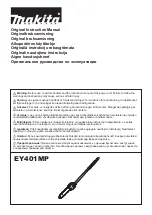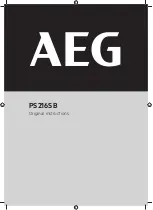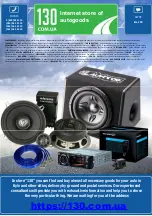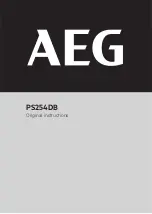
37
GENERAL SAFETY RULES
The label on your tool may include the following symbols:
Read Instruction Manual
Use Eye Protection
Use Ear Protection
V
Volts
Hz
Hertz
min
Minutes
Direct current
Class II construction
Safety alert symbol
A
Amperes
W
Watts
Alternating Current
no
No load speed
Earthing terminal
.../min Revolutions or reciprocations per minute
ADDITIONAL SAFETY RULES FOR TABLE SAWS
FAILURE TO FOLLOW THESE RULES MAY RESULT IN SERIOUS INJURY.
1. DO NOT OPERATE THIS MACHINE
until it is assembled and installed according to the
instructions.
2. OBTAIN ADVICE FROM
another qualified person if you are not familiar with the operation of
this machine.
3. FOLLOW ALL WIRING CODES
and recommended electrical connections.
4. USE THE GUARDS WHENEVER POSSIBLE.
Check to see that they are in place, secured,
and working correctly.
5. KICKBACK IS THE NATURAL TENDENCY OF THE WORKPIECE TO BE THROWN BACK
AT THE OPERATOR
when the workpiece initially contacts the blade or if the workpiece
pinches the blade. Kickback is dangerous and can result in serious injury.
AVOID KICKBACK by:
A.
keeping blade sharp and free of rust and pitch.
B.
keeping rip fence parallel to the saw blade.
C.
using saw blade guard and spreader for every possible operation, including all through
sawing.
D.
pushing the workpiece past the saw blade prior to release.
E.
never ripping a workpiece that is twisted or warped, or does not have a
straight edge to guide along the fence.
F.
using featherboards when the anti-kickback device cannot be used.
G.
never sawing a large workpiece that cannot be controlled.
H.
never using the fence as a guide when crosscutting.
I.
never sawing a workpiece with loose knots or other flaws.
6. ALWAYS USE GUARDS, SPLITTER, AND ANTIKICKBACK FINGERS
whenever possible.
7. REMOVE CUT-OFF PIECES AND SCRAPS
from the table before starting the saw. The
vibration of the machine may cause them to move into the saw blade and be thrown out. After
cutting, turn the machine off. After the blade has come to a complete stop, remove all debris.
8. NEVER START THE MACHINE
with the workpiece against the blade.
9. NEVER
run the workpiece between the fence and a moulding cutterhead.
10. CUTTING THE WORKPIECE WITHOUT THE USE OF A FENCE OR MITER GAUGE IS
KNOWN AS “FREEHAND” CUTTING. NEVER
perform “free-hand” operations. Use either
the fence or miter gauge to position and guide the workpiece.
11. HOLD THE WORKPIECE FIRMLY
against the miter gauge or fence.
12. CUTTING COMPLETELY THROUGH THE WORKPIECE IS KNOWN AS “THROUGH-
SAWING”.
Ripping and cross-cutting are through-sawing operations. Cutting with the grain
(or down the length of the workpiece) is ripping. Cutting across the grain (or across the
workpiece) is cross-cutting. Use a fence or fence system for ripping. DO NOT use a fence or
fence system for cross-cutting. Instead, use a miter gauge. USE PUSH STICK(S) for ripping a
narrow workpiece.
13. AVOID AWKWARD OPERATIONS AND HAND POSITIONS
where a sudden slip could
cause a hand to move into the blade.
14. KEEP ARMS, HANDS, AND FINGERS
away from the blade.
15. NEVER
have any part of your body in line with the path of the saw blade.
16. NEVER REACH AROUND
or over the saw blade.
17. NEVER
attempt to free a stalled saw blade without first turning the machine “OFF”.
18. PROPERLY SUPPORT LONG OR WIDE
workpieces.
19. NEVER PERFORM LAYOUT,
assembly or set-up work on the table/work area when the
machine is running.
20. TURN THE MACHINE “OFF” AND DISCONNECT THE MACHINE
from the power source
before installing or removing accessories, before adjusting or changing set-ups, or when
making repairs.
21. TURN THE MACHINE “OFF”,
disconnect the machine from the power source, and clean the
table/work area before leaving the machine.
TURN THE SWITCH IN THE “OFF” POSITION.
7. LABELS ON TOOL
















































